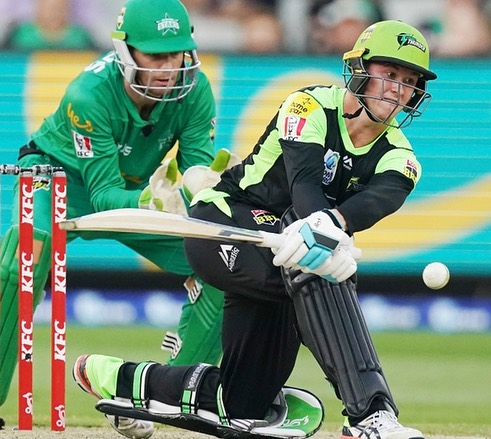
The cricket world is buzzing after a controversial moment involving Matthew Gilkes in a recent domestic cricket match. The catch out incident, which took place during the match between New South Wales and Queensland, has raised questions about the legitimacy of the dismissal, triggering an intense debate among fans, players, and pundits. Was it a clean catch, or did the ball touch the ground? Here’s a detailed breakdown of the incident, its aftermath, and what it means for the future of cricket technology and umpire decisions.
The Incident: A High-Stakes Catch That Sparked Debate
The highly debated moment occurred when Matthew Gilkes, a key fielder in the slips for New South Wales, appeared to take a sharp catch off a delivery that was edged by the Queensland batsman. The ball seemed to carry straight into Gilkes’ hands, and he immediately celebrated the dismissal.
However, slow-motion replays suggested a potential issue: the ball may have brushed the ground before Gilkes secured it in his gloves. With no conclusive angle to prove either way, the third umpire upheld the on-field decision, declaring the batsman out.
The decision sparked an uproar, with players, fans, and commentators divided. Some believed Gilkes had cleanly caught the ball, while others argued that the ball had made contact with the ground.
The Debate: Was It a Fair Catch or a Drop?
The controversy centers around whether Matthew Gilkes actually completed a clean catch or whether the ball touched the ground before being secured in his gloves. Here’s a breakdown of the key points raised in the ongoing debate:
1. The Slow-Motion Evidence
Despite the best efforts of technology, slow-motion replays seemed inconclusive. In certain frames, it appeared that the ball may have grazed the ground before Gilkes’ gloves closed around it. However, the lack of a clear angle left both sides of the argument with room to dispute the decision.
2. Player Reactions
Players from both teams expressed mixed opinions. Some defended the umpire’s decision, stating that the catch was taken cleanly, while others, particularly the Queensland team, felt that the ball had indeed touched the turf.
3. The Role of the Third Umpire
The third umpire’s decision, made with the available replays, was final. Critics argue that despite advanced technology, human interpretation still plays a significant role in cricket decisions. Some feel that better camera angles or more advanced tech could help in similar situations.
Implications: What This Means for Gilkes and the Cricket World
1. Impact on Matthew Gilkes’ Reputation
While Matthew Gilkes remains a promising talent in Australian cricket, this controversial incident could affect his reputation as a fielder. Many believe that Gilkes showed composure in a tense situation, but critics will question whether his performance in high-pressure scenarios can be trusted if similar incidents arise in future matches.
2. The Impact on the Match and Momentum
The catch out incident came at a crucial stage in the match. The Queensland batsman was dismissed at a pivotal point, and the confusion surrounding the legitimacy of the dismissal undoubtedly disrupted the flow of the game. The tension from this controversial moment affected both teams, influencing their performances in subsequent overs.
3. A Call for Technology Improvements
The Matthew Gilkes catch-out controversy has once again reignited the debate about the limitations of cricket’s current review system. While the Decision Review System (DRS) has been instrumental in improving the accuracy of umpire decisions, incidents like this one show that even advanced technologies can’t always provide clear answers. Some are calling for improvements in camera angles or the introduction of more precise technologies to ensure clarity in such situations.
Can Technology Solve the Catch Debate?
With the growing reliance on technology to assist in decision-making, Matthew Gilkes’ controversial catch-out has raised important questions about its role in cricket. While slow-motion cameras, ball-tracking systems, and third umpires have made umpire decisions more accurate, incidents like these demonstrate the limitations of technology in providing definitive answers.
The Role of Human Judgement
Even with high-tech tools, the human element still plays a role. Umpires, whether on the field or in the third umpire’s box, must rely on the available footage and their judgment. In instances where the footage isn’t clear-cut, making the right call becomes challenging.
Future of Umpire Decisions in Cricket
As the game evolves, the need for more accurate and decisive technology becomes more pressing. Whether cricket adopts newer technologies like Hawk-Eye or other advanced ball-tracking systems remains to be seen. What’s clear is that the controversy surrounding Matthew Gilkes’ catch could prompt further discussions about how the sport can improve its decision-making tools.
Final Thoughts: A Moment That Will Not Be Forgotten
Whether Matthew Gilkes took a clean catch or not, the catch-out controversy is a reminder of the unpredictability and intensity of cricket. As the sport continues to embrace technology, we can expect such moments to continue sparking debates among fans, analysts, and players alike.
For now, the Gilkes catch-out will be remembered as one of the more controversial moments in recent cricket history, with many fans still divided over the decision. With the growing influence of technology and more scrutiny on umpire calls, one thing is clear: cricket is evolving, but human judgment remains at the heart of the game.



